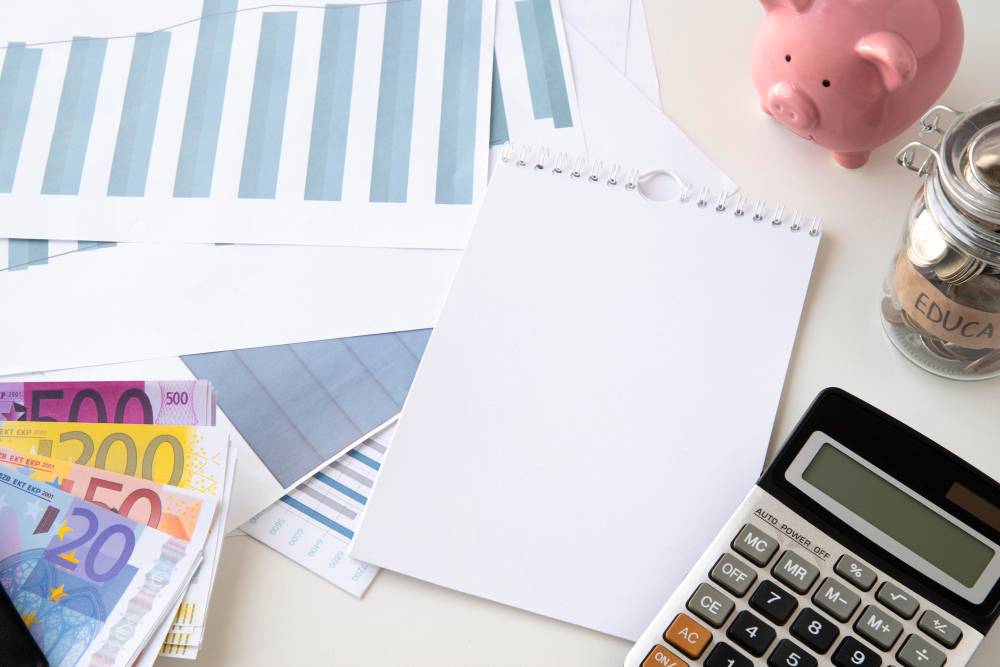Money is complicated. Budgets, investments, taxes, subscriptions, loans – it’s no wonder most people avoid their finances until something goes wrong. But what if a financial app could make money feel simple? What if it could help users understand their financial health in seconds and act on it without thinking twice?
That’s the power of smart design, automation, and the right development partner.
In today’s world, users expect more than charts and transaction lists. They want insight, clarity, and control – right from their pocket. That’s why financial app development has moved far beyond spreadsheets. It’s now about creating an experience that makes even the most complex financial tasks feel easy.
Why Most Finance Apps Fail (and How to Do It Better)
Let’s be honest – many finance apps are overwhelming. They bombard users with graphs, jargon, and notifications. The result? People uninstall them within days.
Here are the biggest problems we see:
- Too much data, not enough clarity
- Poor onboarding that leaves users confused
- Features that solve nothing real
- Clunky UX that hides the value
The best financial app developers fix these issues by focusing on simplicity, guidance, and value-driven functionality. Your app shouldn’t just show numbers – it should help users make better decisions without extra effort.
What Makes a Great Financial App Today
Finance apps have come a long way. From simple balance checkers to full-blown personal financial assistants, the best apps today don’t just show data – they guide users, simplify decisions, and help people feel in control of their money.

So whether you're working on a budgeting tool, an investment platform, or an everyday expense tracker, these are the essential ingredients your financial app needs to stand out:
1. Personalized, Actionable Insights
No one wants to scroll through endless graphs to figure out what’s important. Smart financial apps analyze user behavior and financial patterns, then highlight what matters most - like a sudden spending spike, a subscription that’s about to renew, or a better savings route.
Use AI to go beyond basic data. If someone is consistently overspending on dining out, suggest a weekly meal plan or a food budgeting goal. Help them make sense of their habits without making them feel judged.
2. Seamless, One-Tap Actions
Financial apps should feel empowering - not like a chore. Want to move money to savings? Pay a bill? Set a new goal? These should be intuitive, quick, and satisfying.
Reducing the steps it takes to complete a financial task improves conversion and builds user trust. One-tap transfers, swipe-to-categorize features, and quick goal creation make daily finance management smoother.
3. Clear, Digestible Visuals
Financial data can get complex fast. The challenge is to simplify it without losing meaning. That’s where great design comes in.
Use progress bars, monthly snapshots, simple charts, and categorized timelines to help users visually track their spending, income, and goals. Avoid crowded dashboards or overly technical graphs - clarity beats complexity every time.
4. Subtle Gamification that Motivates
Gamification works - even in finance. Features like savings streaks, badges for hitting milestones, or progress bars for debt payoff can turn mundane tasks into rewarding habits.
The trick is to keep it light. The goal isn’t to turn the app into a game, but to make progress feel visible and motivating. Users should feel proud, not pressured.
5. Strong, Transparent Security
When it comes to money, trust is everything. Users won’t stick around if they feel their data isn’t protected.
A strong financial app includes end-to-end encryption, biometric login (like fingerprint or Face ID), and multi-factor authentication. But just as importantly, it communicates what data is used, why, and how it’s stored - plainly and clearly.
6. Cross-Platform Consistency
Your users want flexibility. Some will use your app daily on their phone, others might prefer to review their finances on a desktop.
That’s why a consistent experience across mobile and web matters. Whether on iOS, Android, or browser, the interface should feel familiar, sync quickly, and never leave users wondering, “Where did that feature go?”
7. Offline Capabilities for On-the-Go Use
People want to check their budget or log a purchase immediately - sometimes even without internet access.
A smart financial app allows users to access core features offline and syncs when reconnected. This kind of functionality boosts retention and builds habits by reducing friction in everyday usage.
8. Notifications That Actually Help
Push notifications shouldn’t just be noise - they should be timely, helpful nudges. Think:
- - “You’re $10 away from your savings goal!”
- - “Spending on groceries is up 20% this week.”
- - “Looks like you missed a budgeted category - want to update it?”
When done right, notifications turn passive apps into daily-use tools.
9. Open Banking Integration
People have accounts across multiple banks, credit cards, and financial services. Your app becomes far more valuable when it brings those together.
Thanks to open banking APIs, users can now securely connect multiple institutions in one place. This enables full-picture budgeting, smarter alerts, and better insights. It’s becoming a core feature in any serious financial app development strategy.

Using Flutter for Finance? Smart Move.
Want to build fast and reach more users? A flutter finance app is a powerful choice.
With Flutter, finance mobile app development becomes more efficient:
- - One codebase for Android and iOS
- - Fast UI performance and native-like feel
- - Cost-effective and future-friendly
We’ve used Flutter to build sleek, scalable fintech solutions that users love. If you want to get to market quickly without sacrificing quality, Flutter is worth serious consideration.
What We Offer at Olearis
We work with startups and established teams to build finance apps that work. As one of the trusted financial app development companies, we focus on:
- - Clear onboarding to increase activation
- - AI-powered insights to help users act
- - Fast, reliable architecture for scalability
- - User-centric design that makes finance feel simple
Whether you need help scoping your MVP or scaling to millions of users, we’re the financial application developer that brings clarity to complexity.
We’re also experienced in building apps that are secure, compliant, and optimized for real results. Our fintech mobile app development services are all about speed, usability, and trust.
Our process starts with discovery — understanding the pain points your users face every day. From there, we create detailed wireframes and interactive prototypes, validate with real users, and build with a modular backend that can evolve as your business grows.
We’ve worked on tools that sync with banks in real-time, track crypto investments, and even help freelancers manage tax deductions. If your idea involves numbers, automation, and better money decisions — we’re ready.
No matter the use case — whether you're targeting Gen Z investors, small business owners, or households managing shared budgets — our goal is the same: build a financial tool that feels intuitive, insightful, and trustworthy from the very first tap.
Let’s Turn Financial Frustration into Action
If you're exploring financial app development, your goal is simple: help people take control of their money without anxiety.
With the right strategy, tech stack, and team, you can launch a product that people not only use — but depend on.
Looking for experts in financial app development who understand both the tech and the user? Let’s talk.
Your users deserve clarity. Your app deserves Olearis.



